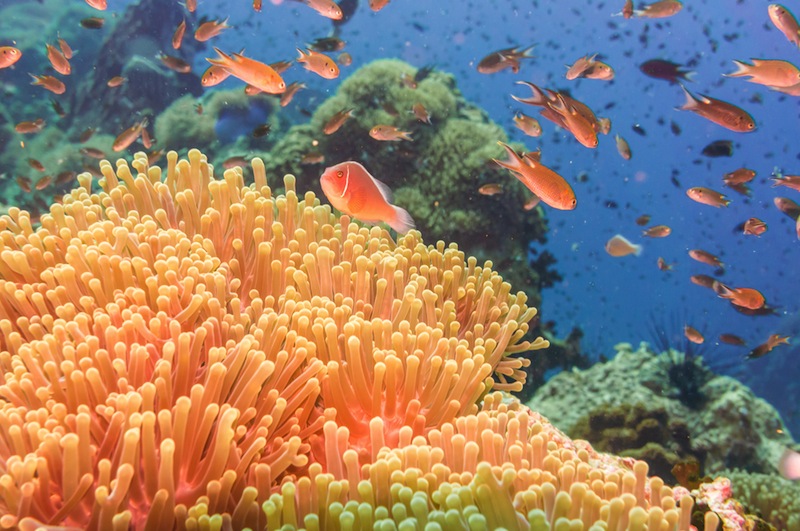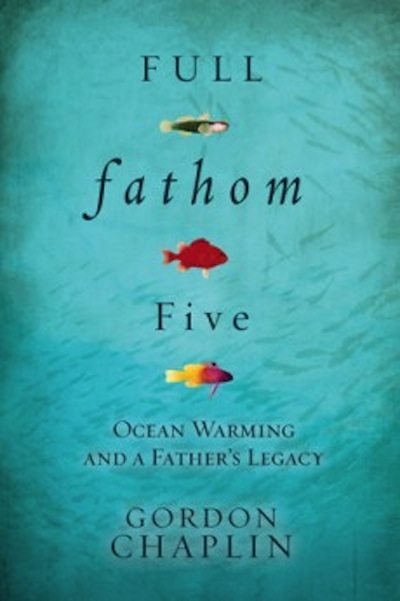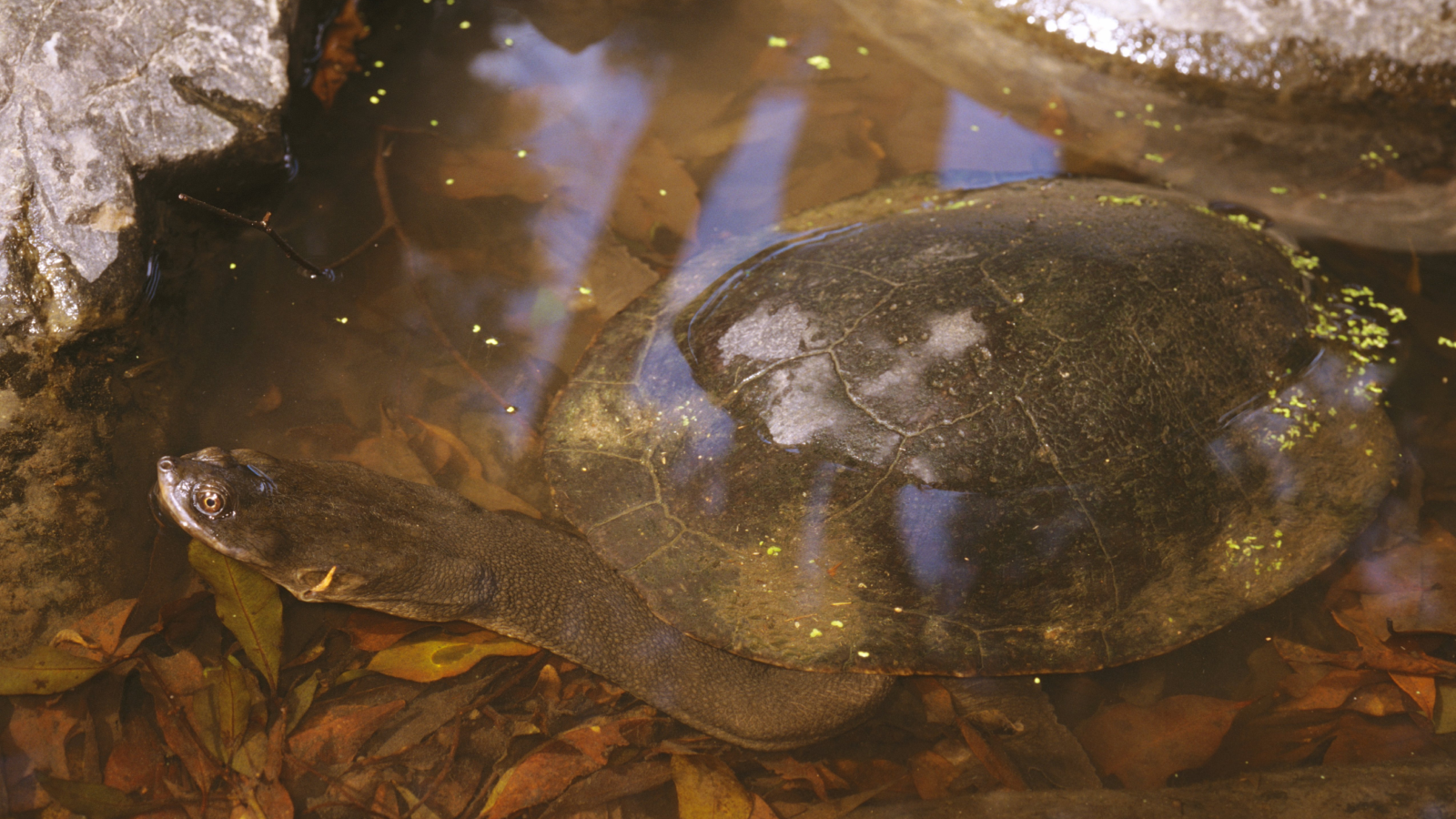Book Excerpt: 'Full Fathom Five: Ocean Warming and a Father's Legacy'

Gordon Chaplin's father was a seemingly happy-go-lucky, charismatic adventurer who married a wealthy heiress and somehow transformed himself into the author of a landmark scientific study, Fishes of the Bahamas, published by the Academy of Natural Sciences of Philadelphia. As a young boy, the author took part in collecting specimens for his father. Fifty years later, he was asked to join a team from the same institution studying the state of sea life in the Bahamian waters where he grew up, as measured against his father’s benchmark. The first of the sea changes presented in this eloquent book stems from climate change and is the drastic transformation of ocean life due to global warming. The second is his father’s miraculous transformation from presumed playboy into scientist. And the third involves the author’s own complicated relationship with his parents and in particular his father, as he grew older and assumed the part of the prodigal son. Fifty years later, returning to his childhood home, he delves into the mysteries of his father’s life and the impossibility of ever truly recovering the past, or ever returning home. Chaplin's newest book "Paraíso: A Novel" comes out July 5, 2016.
The following is an excerpt from Chaplin's book "Full Fathom Five: Ocean Warming and a Father's Legacy."
Totems Revisited (2)
June 2004
"It is the part of wisdom never to revisit a wilderness," wrote Aldo Leopold, the father of American wildlife conservation, "for the more golden the lily, the more certain that someone has gilded it. To return not only spoils a trip, but tarnishes a memory. It is only in the mind that shining adventure remains forever bright."
Of course, the central concept of this project flies directly in the face of that advice. I expect my memory to be tarnished, and measuring exactly the degrees and details of tarnishing is what my colleagues and I will be trying to do as we return fifty years later to my father's original collecting sites on this and future trips.
Leopold himself never heeded his own advice either. Conservation is based on keeping track of wilderness, taking a stand, not turning away. So I'm off to a pretty dramatic start: I’m almost killed trying to revisit my wilderness totem.
Get the world’s most fascinating discoveries delivered straight to your inbox.
The most beautiful shallow reefs of my childhood were to be found off Lyford Cay, at the western end of New Providence Island about ten miles from Nassau. So, bright and early in the morning after out arrival, taking Leopold’s bull firmly by the horns, Dominique, Danielle, Heidi, and I pile into our rented outboard runabout to see what’s happened to these reefs in the half-century since I last saw them.
The sun is behind us and I pilot the runabout west out of Nassau Harbor, which makes each coral head and ledge stand out sharply in the shallow water inside the reef. We’re going at a good clip, maybe 25 knots, and the daily east wind has yet to pick up, so the water surface is glassy. We roar over the sand flats where Stan Waterman speared a huge tiger shark long ago, our wake leaving a reflected vee on the bottom. There’s no sign of life down there now. Balmoral Island, and exclusive beach club in the old days, has been converted for tourist parties; its new name is Discovery.
Arriving at the Lyford Cay Marina channel, I hold close to the beach inside the reefs, and we drop anchor about there I had my second terrifying childhood encounter with a barracuda. Onshore, we can see a woman in a blue-and-white Lily Pulitzer bathing suit saunter across the spacious lawn of her estate. Lyford Cay itself is now an exclusive gated community for tax exiles like Campbell Soup heir John Dorrance, investor Elliot Templeton, and actor Sean Connery.
Dominique, Heidi, and Danielle are still fiddling with their SCUBA equipment, cameras, clipboards, and measuring gear as I go overboard backwards in a cloud of bubbles. When I get my bearings and can look around, it takes a few moments to understand exactly what I am seeing. Finally, it comes to me: the light has gone out.
It is a sunny day, and plenty of light shines through the surface onto the reef, but it is absorbed like light on a winter forest. Darn green-brown algae covers the broken branches of elkhorn coral, and they no longer glow that magnified, intensified terra cotta fluorescence. Under the algae, the coral has died.
You can read about this destruction, and I have, but that doesn’t even come close to preparing you for seeing it firsthand. I swim around the "bare ruined choirs" in a daze, trying to remember why I’d come.
Science! The three scientists are now in the water with me, consumed in their work. Dominique, holding a clipboard with a waterproof form attached that lists all fish species likely to be seen, is recording population estimates ranging from "rare" (one specimen) to “abundant” (over one hundred) for each species.. She'll be counting for fifteen minutes throughout a circle thirty meters in diameter, beginning in open water about the reef, with free-swimming fishes like snappers, grunts, and chromis, then free-diving down (tank-diving when pregnant is a no-no) to check the crannies in the dead coral that shelters cardinalfish, gobies, and blennies. Heidi, using SCUBA, is laying out a 30-meter tape over the top of the reed, down its side, and along the bottom nearby. Later she’ll video and photograph along this transect. Back in the lab she’ll analyze the images for type and percentage of cover: rock, sand, algae, live coral, et cetera. Danielle is sampling the water with a sterile polyethylene container to test later for suspended particles that can show the level of pollution.
Gathering data is comforting, but still . . . they didn’t see these reefs fifty years ago. I grab a clipboard and form and do a fish survey of my own. Dominique and I between us count very few grunts, no tiger groupers (or any kind of grouper), no snappers. Neither do we count any spiny lobsters, eagle rays, drums, filefish, toadfish, soapfish, or cherubfish.
It was revisiting wildernesses, witnessing firsthand how they'd changed over time, that set Leopold on his life's course. But I don’t think even Leopold saw such a drastic example of deterioration as I do at Lyford Cay on this first day of our explorations: 90 percent of his beloved Southwestern forests did not die during his lifetime.
In his seminal essay, "Thinking like a Mountain," from A Sand County Almanac, Leopold writes that his epiphany came while watching a wolf he’d shot:
We reached the old wolf in time to watch a fierce green fire dying in her eyes. I realized then, and have known ever since, that there was something new to me in those eyes—something known only to her and to the mountain. I was young then, and full of trigger itch; I though that fewer wolves meant more deer, that no wolves would mean a hunters’ paradise. But after seeing the green fire die, I sensed that neither the wolf nor the mountain agreed with such a view.
The barracuda is the wolf of the reef, but my own epiphany is more zen. I don’t shoot a barracuda and watch it die, I just never see any barracuda at all (at least not over six inches long). Not then, nor in the following ten days of diving up and down the north coast of New Providence Island as we scout out and survey as many of the old collection sites as we can find. This is a recon trip, to establish the lay of the land, to suggest the overall direction of the project. The actual collecting of fishes will be done on subsequent ones. If we can get the rotenone permit.
Underwater, off Lyford Cay, I keep looking into the blue distance for that spine-tingling silvery glint, and when it doesn’t appear I realize how much I miss it. "Once seen, never forgotten," as my father lovingly described the big, scary predator in his Fishwatcher's Guide. Certainly true for me. My first sighting in the little cove at Treasure Island is seared into my brain forever. He respectfully titled any barracuda over five feet an "old growler," and relished telling the tale of a southern Bahamas fisherman who encountered one that was longer than his twelve-foot dinghy. This was the only fish he immortalized, in the mosaic and the oil painting that now reside in my New York loft. He adored the frisson of barracudas. Pretty strange to imagine that the creature that had terrified me most as a child could easily be his totem.
Copyright © by Gordon Chaplin. Used by permission of Arcade Publishing. All rights reserved.




